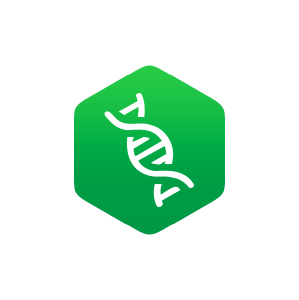Search
- Filter Results
- Location
- Classification
- Include attachments
- https://bio.libretexts.org/Bookshelves/Biochemistry/Supplemental_Modules_(Biochemistry)/1%3A_DNA/1.4%3A_DNA_Modifying_EnzymesThe methylase encoded by the dam gene (dam methylase) transfers a methyl group from SAM to the N 6 position of the adenine base in the sequence 5' … GATC … 3'. Catalyzes the transfer and exchange of a...The methylase encoded by the dam gene (dam methylase) transfers a methyl group from SAM to the N 6 position of the adenine base in the sequence 5' … GATC … 3'. Catalyzes the transfer and exchange of a phosphate group from the g position of rATP (adenine ribose triphosphate nucleotide) to the 5' hydroxyl terminus of double stranded and single stranded DNA or RNA, and nucleoside 3' monophosphates.
- https://bio.libretexts.org/Bookshelves/Biochemistry/Fundamentals_of_Biochemistry_(Jakubowski_and_Flatt)/Unit_IV_-_Special_Topics/28%3A_Biosignaling_-_Capstone_Volume_I/28.04%3A__The_next_step_-_Downsteam_intracellular_signalingThis document provides a comprehensive overview of intracellular signaling, focusing on various pathways such as those mediated by PKA, PKC, AKAPs, RTKs, JAK/STAT, and Src family kinases, as well as M...This document provides a comprehensive overview of intracellular signaling, focusing on various pathways such as those mediated by PKA, PKC, AKAPs, RTKs, JAK/STAT, and Src family kinases, as well as MAPK cascades. It discusses the components involved in signal transduction, their mechanisms of activation and regulation, and the integration of different pathways to generate specific cellular responses.
- https://bio.libretexts.org/Bookshelves/Introductory_and_General_Biology/Principles_of_Biology/02%3A_Chapter_2/16%3A_Gene_Regulation/16.02%3A_Eukaryotic_epigenetic_regulationThe epigenome comprises all of the chemical compounds that have been added to the entirety of one’s DNA (genome) as a way to regulate the activity (expression) of all the genes within the genome. The ...The epigenome comprises all of the chemical compounds that have been added to the entirety of one’s DNA (genome) as a way to regulate the activity (expression) of all the genes within the genome. The most important concept in the histone code hypothesis is that the histone modifications serve to recruit other proteins by specific recognition of the modified histone, rather than through simply stabilizing or destabilizing the interaction between histone and the underlying DNA.
- https://bio.libretexts.org/Bookshelves/Introductory_and_General_Biology/Biology_(Kimball)/09%3A_Regulation_of_Gene_Expression/9.12%3A_Imprinted_GenesThis page discusses imprinted genes, which have parent-specific expression, with around 80 identified in mammals and angiosperms. Examples include the paternal activation of IGF2 and maternal repressi...This page discusses imprinted genes, which have parent-specific expression, with around 80 identified in mammals and angiosperms. Examples include the paternal activation of IGF2 and maternal repression of IGF2r. Imprinting occurs during gamete formation via DNA methylation and can lead to disorders like Prader-Willi and Angelman syndromes, as well as cancers if misregulated.

